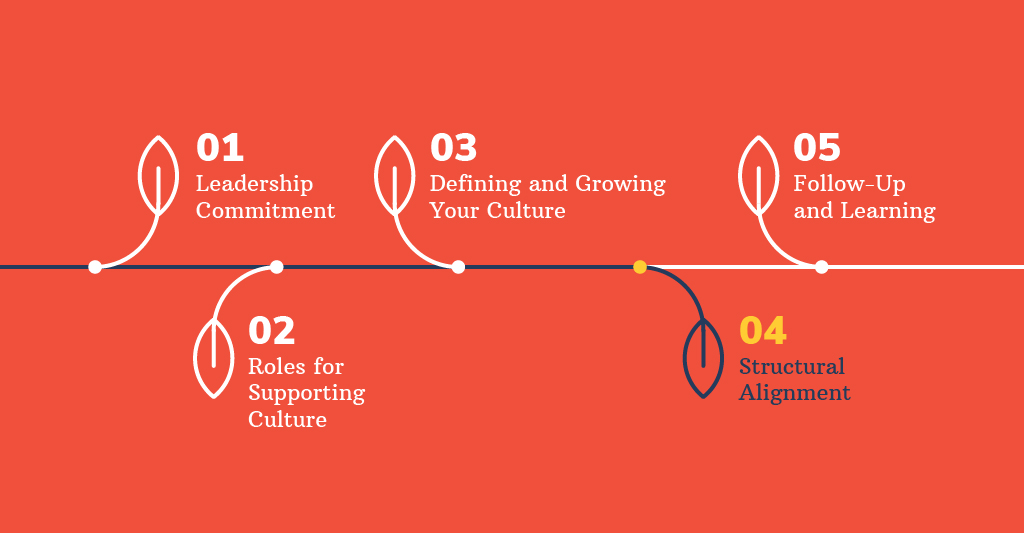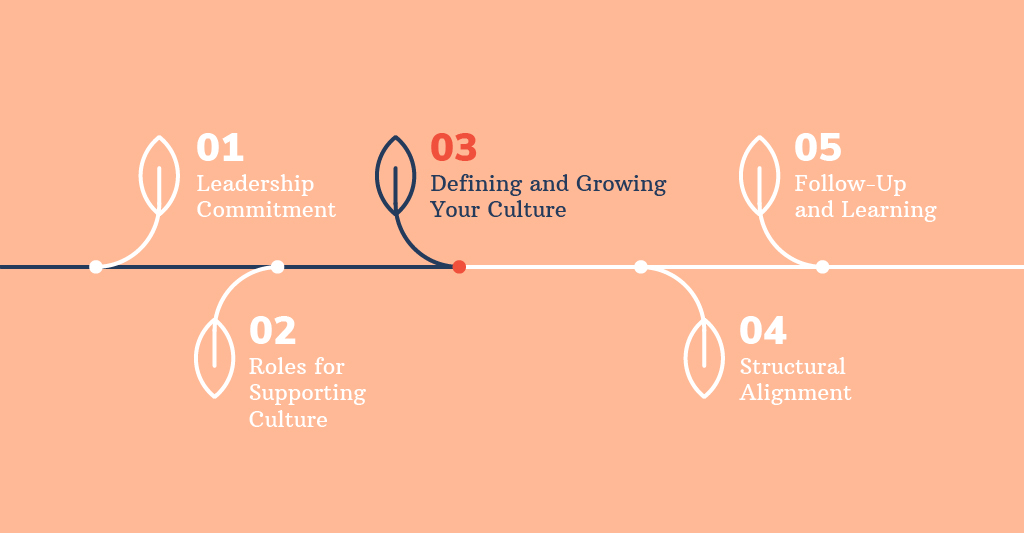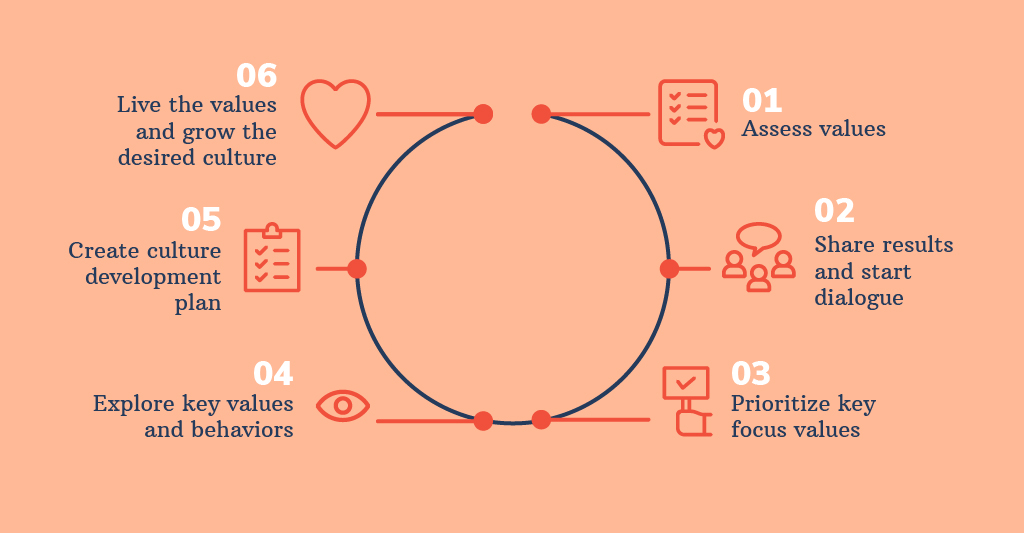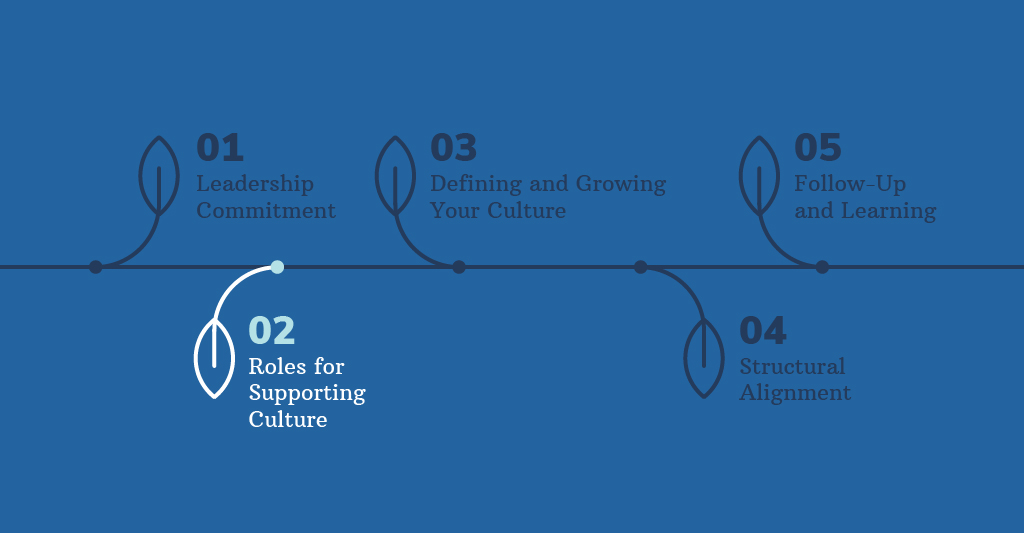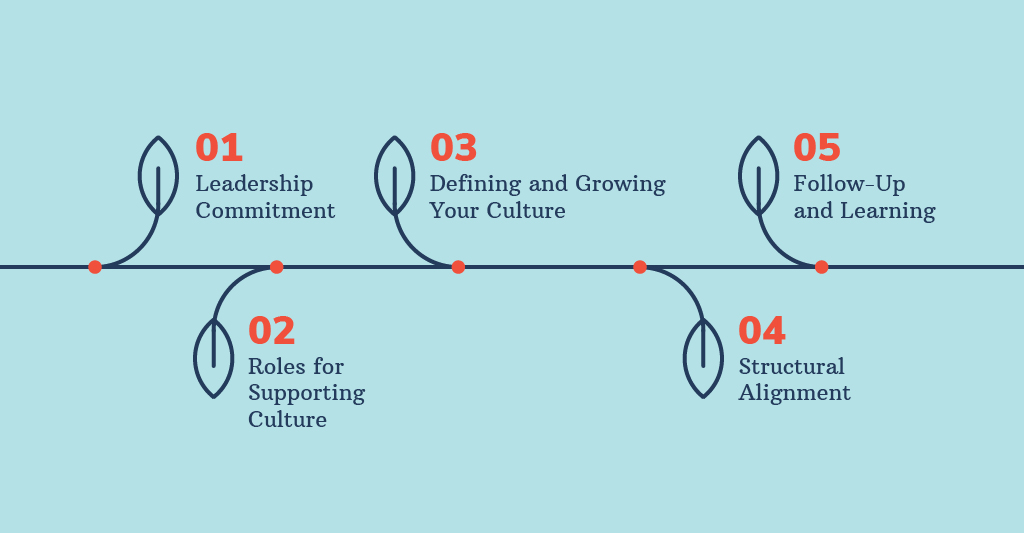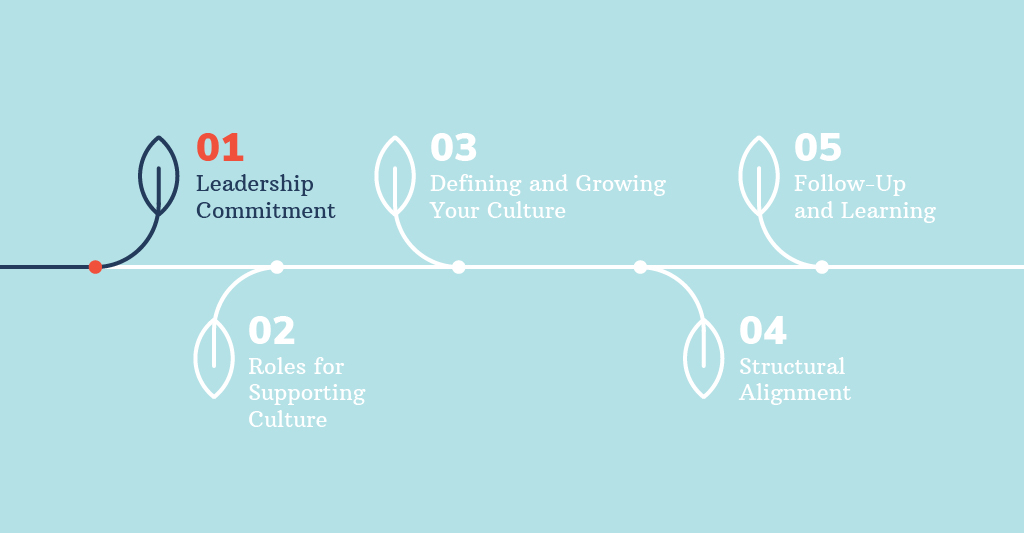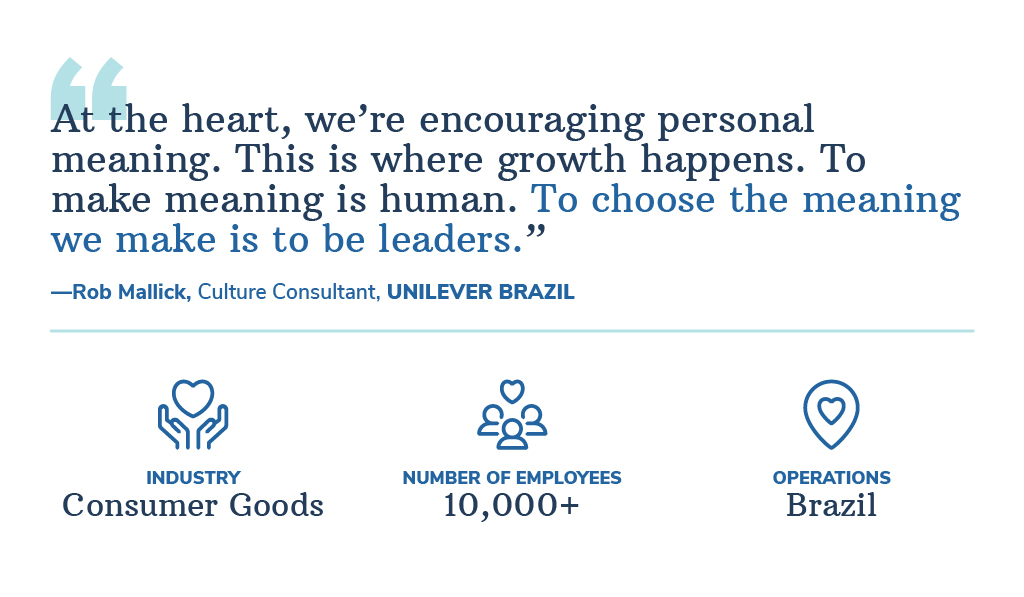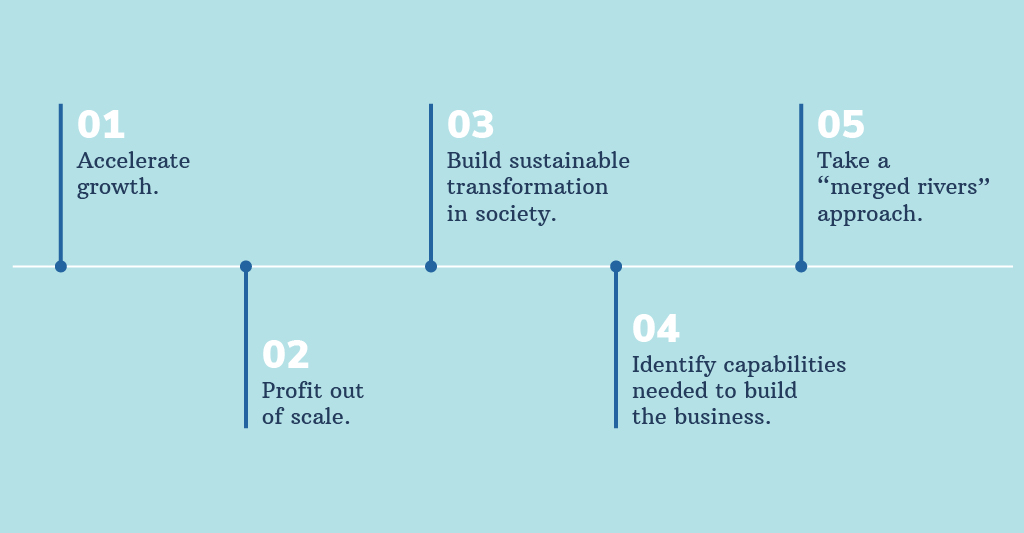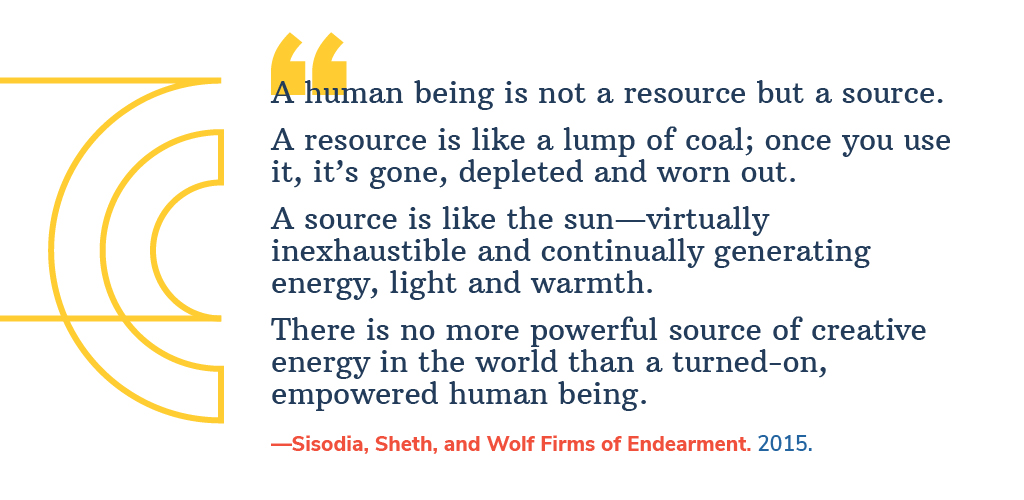Last week, we continued our journey through the components necessary for growing your desired culture and focused on Structural Alignment. Today, we continue with Follow-Up and Learning.
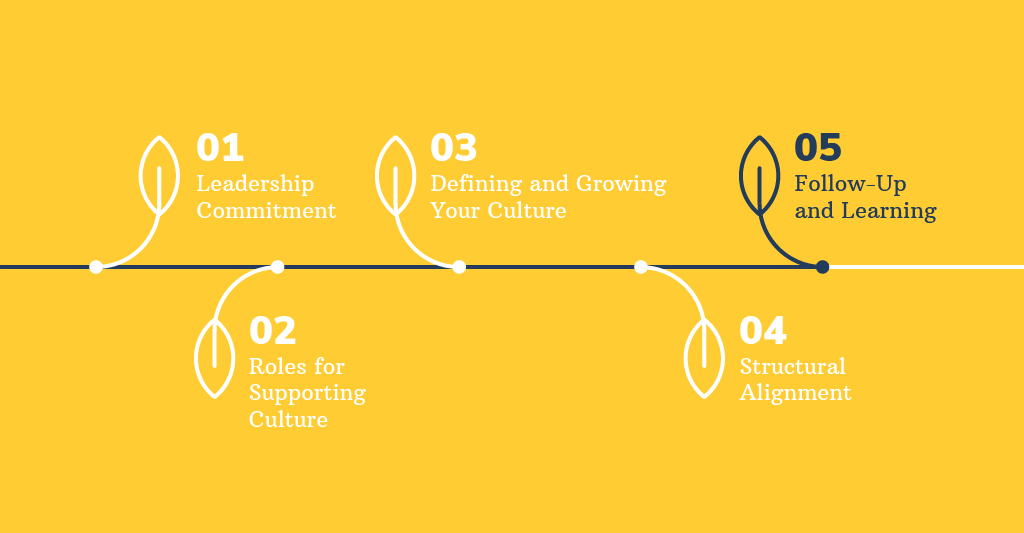
The process of cultural change in an organization is iterative. Building feedback loops for learning and growth is one of the most commonly forgotten steps in the journey. These steps will help you learn where to focus your attention and let you know when you need to correct your course:
DAILY FEEDBACK
Feedback is an effective way to visualize and manifest a desired culture. “Effective feedback enables the receiver to walk away understanding exactly what he or she did and what impact it had on them. When the result is this specific and this direct, there is a better chance that the person getting the feedback will be motivated to begin, continue, or stop behaviors that affect performance” (Weitzel, Feedback That Works, 2000).
Related exercises: Effective Feedback from the book Get Connected (p. 173)
REFLECTION AND “LESSONS LEARNED” MEETINGS
We need to invest time to stop, reflect, and learn collectively. This helps us develop shared meaning and an understanding about what works and what does not. The purpose is to enhance your team’s ability to transform and learn.
Related exercises: Team Learning from the book Get Connected (p. 165)
RECOGNITION, CELEBRATION, AND REWARDS (Performance/Behavior Awards)
People like to be caught doing things right. This is contagious, so the more you do this, the more it will
spread. Traditionally, we are not good at celebrating what is right and good around us. By intentionally focusing on the positive, we also grow the behavior and culture we want to see.
Recommended book for ideas: 1501 Ways to Reward Employees by Bob Nelson
QUARTERLY CULTURE REPORT
Shared picture of each team’s current culture journey through data collection and dialogue.
Related exercises: Culture Report from the book Get Connected (p. 185)
ROLLING THREE-MONTH PLAN
This plan includes focus, actions, and dates. It helps the top team and the Culture Manager review, focus, and manage the cultural transformational journey. The eBook, as a whole, with its related activities and questions, is meant to serve as a base for building a rolling three-month plan to manage your culture.
A CULTURE DEVELOPMENT PLAN
This plan includes desired values, actions, responsibilities, and dates. It helps each team review, focus, and manage the cultural transformational journey.
There is an example of a Culture Development Plan in the book Get Connected (p. 54).
FOLLOW-UP CULTURE ASSESSMENT
Define how and when you intend to follow up to see the effect of your efforts and the evolution.
![]()
 In 2017, Ashley Munday, Former Director of Thrive by SweetRush, and Tor Eneroth, Director of Cultural Transformation at Barrett Values Centre, wrote an eBook as a resource and workbook for leaders to get started on the culture journey in a meaningful and tactical way. To accommodate as many leaders as possible, we have converted the content into a series of articles that can be read piece by piece and will be publishing them on a weekly basis. We invite you to consume the material at your own pace and welcome your feedback and questions along the way. Thrive by SweetRush is now known as Transforming Leaders and Culture (TLC) by SweetRush. Please reach out to begin transforming your organization today!
In 2017, Ashley Munday, Former Director of Thrive by SweetRush, and Tor Eneroth, Director of Cultural Transformation at Barrett Values Centre, wrote an eBook as a resource and workbook for leaders to get started on the culture journey in a meaningful and tactical way. To accommodate as many leaders as possible, we have converted the content into a series of articles that can be read piece by piece and will be publishing them on a weekly basis. We invite you to consume the material at your own pace and welcome your feedback and questions along the way. Thrive by SweetRush is now known as Transforming Leaders and Culture (TLC) by SweetRush. Please reach out to begin transforming your organization today!
![]()
If you’re reading this series, we know you are a leader who understands and cares about the way your organization’s culture supports its people and its purpose—for that, we thank you! Check out the other articles in this series:
- Culture Change in Organizations Begins Within
- Organizational Culture Transformation—A Journey, Not a Destination
- Culture Change Case Study: Volvo IT
- Changing Corporate Culture Case Study: Old Mutual Group
- Cultural Change In Organizations Example: Unilever Brazil
- Key Learnings in Culture Transformation
- Growing Your Desired Culture: Leadership Commitment
- Growing Your Desired Culture: Roles for Supporting Culture
- Growing Your Desired Culture: Defining and Growing Your Culture
- Growing Your Desired Culture: Structural Alignment
- Growing Your Desired Culture: Follow-Up and Learning
